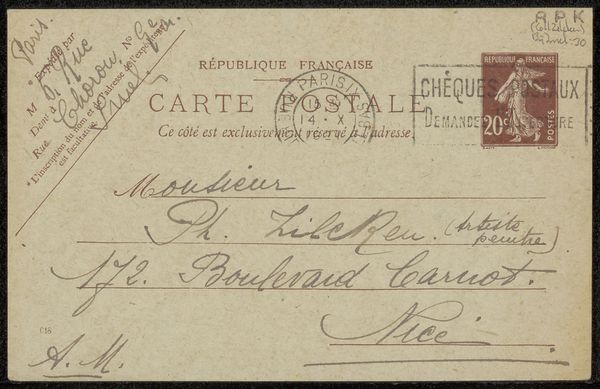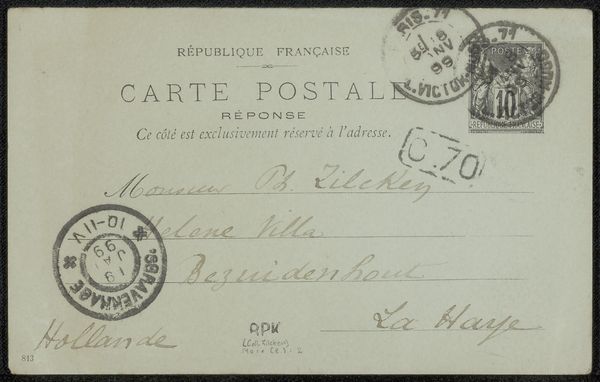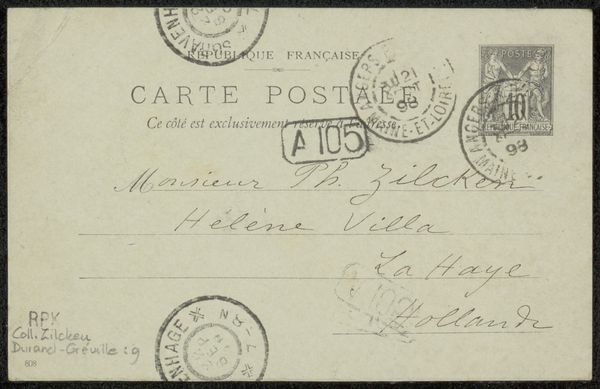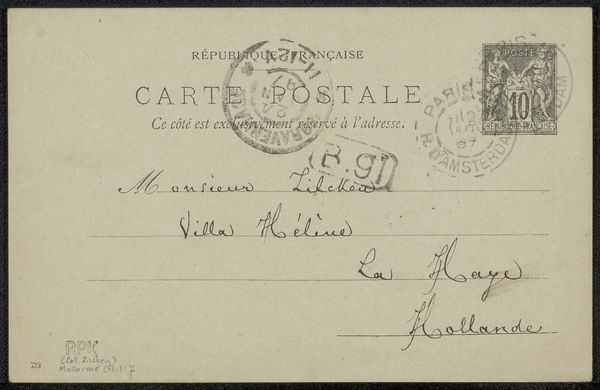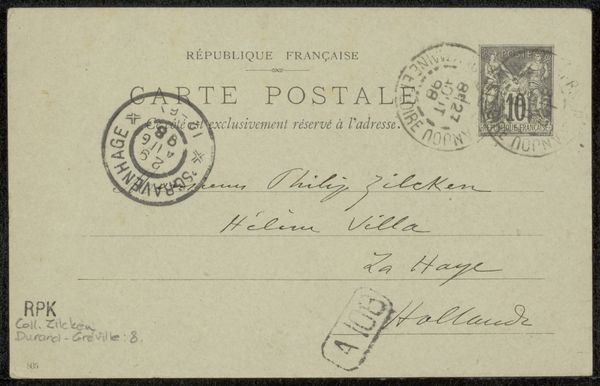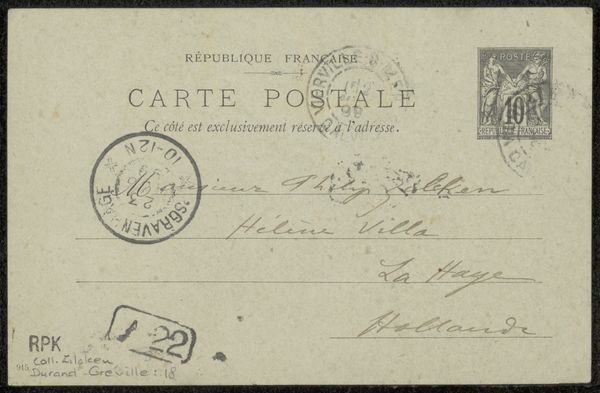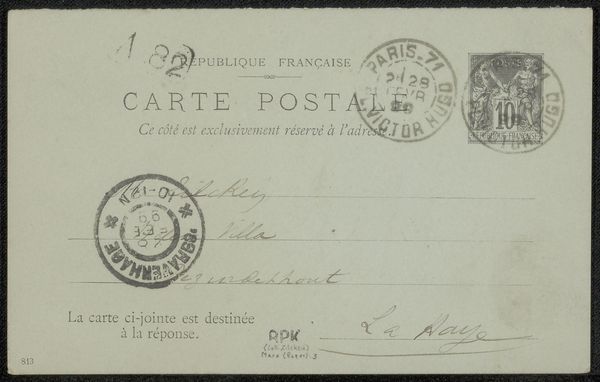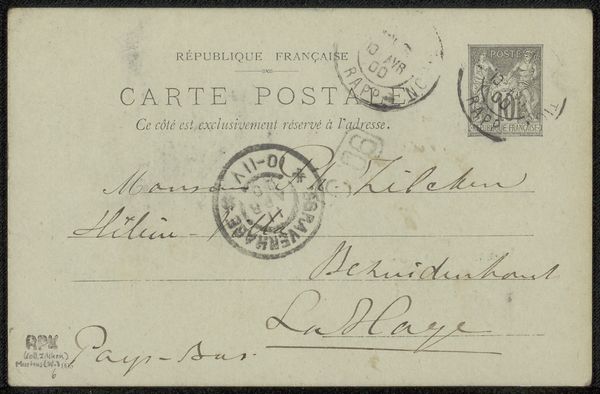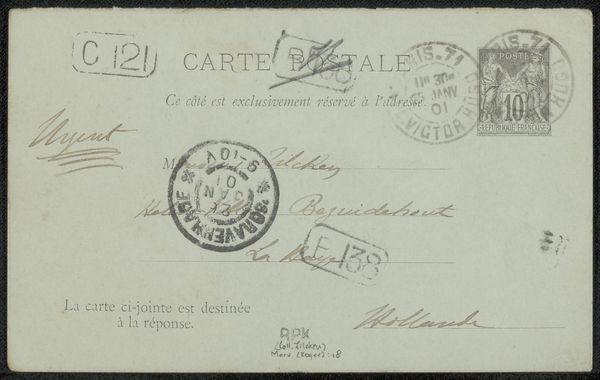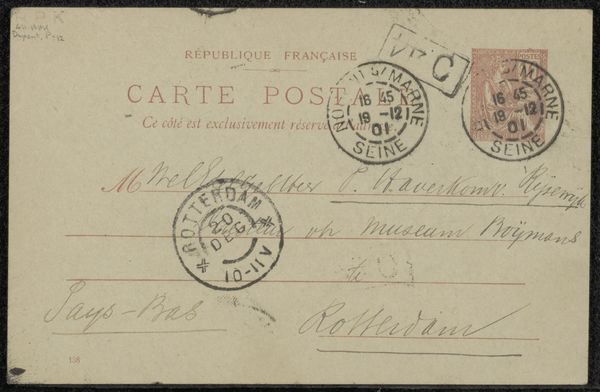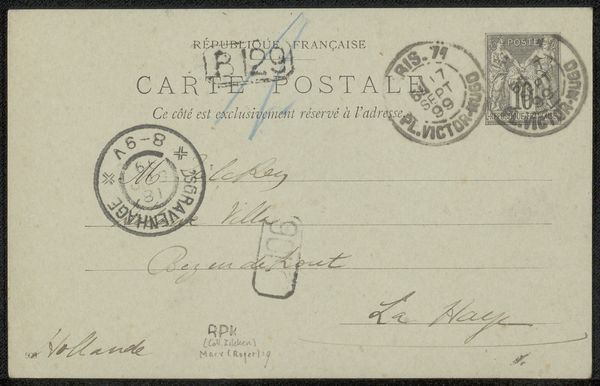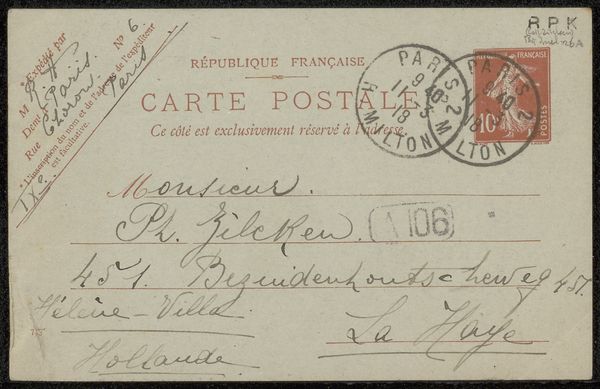
print, photography
#
portrait
# print
#
photography
#
post-impressionism
Copyright: Rijks Museum: Open Domain
Curator: Let's consider this intriguing piece: "Briefkaart aan Philip Zilcken," which translates to "Postcard to Philip Zilcken." It is possibly from 1899, a photographic print crafted by Émile Durand-Gréville. The photographic image presents its historical message via stamps and handwriting. What strikes you about it? Editor: Immediately, I'm struck by the ghostly quality, like holding a whisper of a forgotten conversation. It's beige on beige on beige; it's about absence and trace more than anything else, isn't it? Makes me think about how fragile memory is, how quickly it fades. Curator: Indeed. This work can be interpreted through the lens of archival studies, particularly as it relates to the preservation of personal narratives and historical documentation. Consider the role of correspondence during that period. This piece, even just a simple postcard, allows us a direct line of inquiry into social networks of the time. Editor: Absolutely, and the handwritten address…it’s so personal. I'm already imagining the stories. Hélène Villa... La Haye… I'm half tempted to track them down. Wouldn’t it be wonderful if we could continue the conversation the artist started! A Post-Postcard, so to speak. Curator: That yearning is part of the power of its Post-Impressionist approach, capturing the immediate sense of feeling while opening channels of contextual inquiry and interpretation that are never fully resolved. This also connects to the power dynamics within interpersonal communication itself, considering who is sending the card and their relationship with the recipient. Editor: So true! It almost feels wrong to turn it into art! Yet here we are, dissecting it and wondering how it all went down. Perhaps we should leave a Post-Postcard ourselves. Curator: The ethics and semiotics of correspondence as cultural artifact… there is indeed much to unpack here, a lot to keep exploring. Editor: Indeed. It really makes one reflect upon the way that memories from over a hundred years ago can affect us so profoundly in the present.
Comments
No comments
Be the first to comment and join the conversation on the ultimate creative platform.
